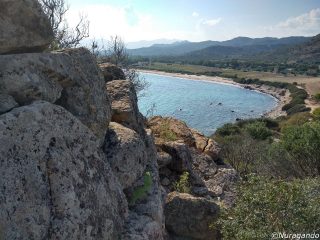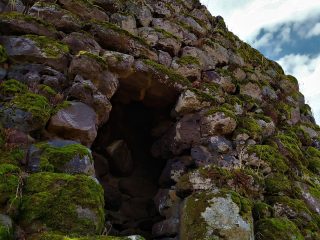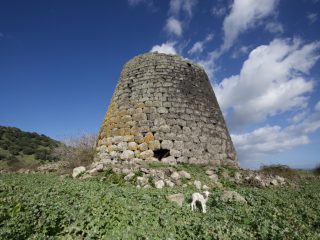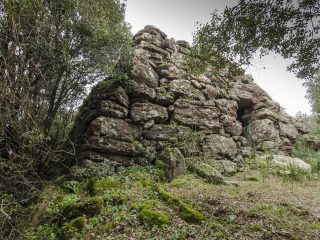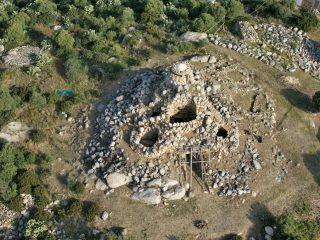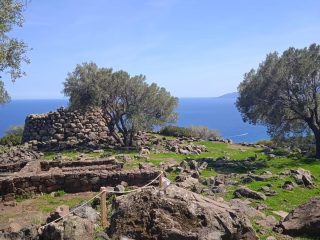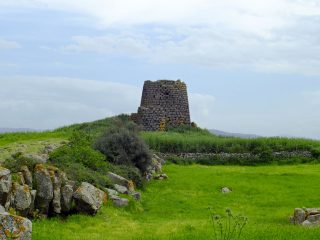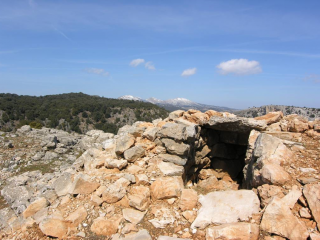A solitary construction on a hill not far from the domus known as “roccia dell’elefante” (elephant rock).
The nuraghe Paddagiu (or paddagiu, or paddaju), in Sardinian means haystack, perhaps because that was what this ancient construction was used for latterly. It served as a storeroom in Roman times and originally consisted of a main tower with typical “tholos” roof (i.e. false vault), a fortress with two side towers and a thick defence wall which also included the area covered by the village.
All that remains now of the vast original complex is the ruins of the main tower, a stretch of about 27 metres of the defence wall and the foundation of a hut with a diameter of about 6 metres. The tower is about 11 metres in diameter at the base and 8.5 metres of remaining height. It has two rooms on two floors connected by an internal staircase.
The unusual feature of this architectural giant is the presence of machicolations on the entrance corridor and staircase, which gives the idea of a defence system.







